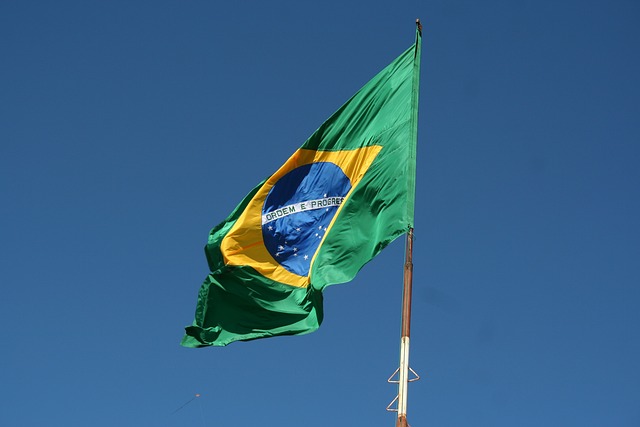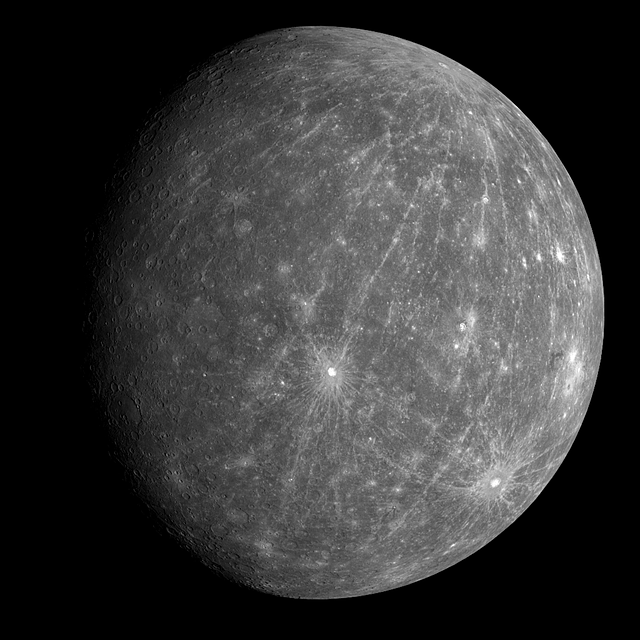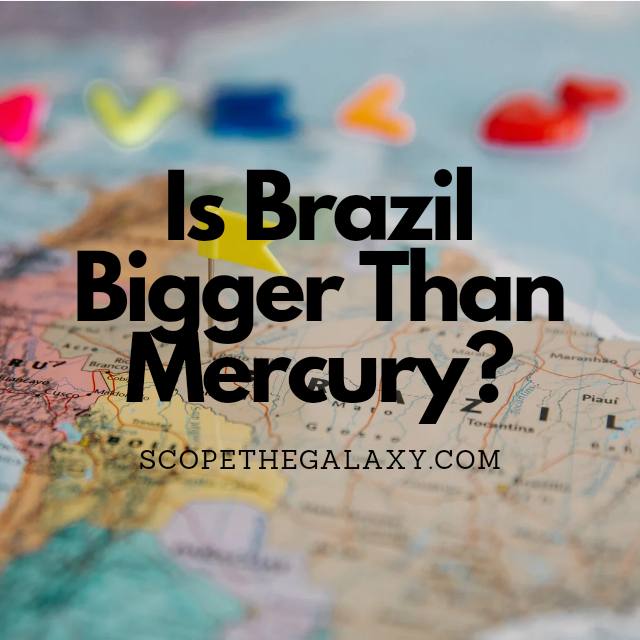*This post may contain affiliate links. This means we may make a commission if you purchase an item using one of our links*
Brazil has a surface area of 8.5 million sq. kilometers and a volume of 340 million cubic kilometers while Mercury is the smallest planet but a spherical entity with a surface area of 74.79 million sq. kilometers and a volume of 60.8 billion cubic kilometers. Therefore, it only makes sense that a planet would be bigger as it is spherical whilst Brazil is a flat land mass.
In this article I’ll be going over what makes each body as big as they are so continue reading for a more detailed look at each of these bodies below.
How Big Is Brazil?

Brazil, officially known as the Federative Republic of Brazil, is a country situated in South America. However, it makes up around half of the continent’s total landmass. It is the fifth largest country in the world, only beaten by the United States, Russia, Canada, and China.
Brazil stretches for roughly 4,350 kilometers from north to south and around 4,395 kilometers from east to west, giving its circumference a total landmass of around 8.5 million square kilometers. Within this landmass of Brazil, there are approximately 216 million people, which makes it the 6th most populated country in the world.
Brazil is so large that it covers 7,400 kilometers of the Atlantic coastline, sharing over 15,000 kilometers of inland borders with just about every South American country besides Ecuador and Chile. They border Uruguay to their South, Bolivia, Paraguay, and Argentina to their South West.
Peru lies to the West of Brazil, while Venezuela, Suriname, Guyana, and French Guiana lie to its immediate north. The total shape of Brazil forms an enormous irregular triangle that includes a huge amount of the Amazon rainforest, subtropical landscapes, savanna, wetlands, and mountainous regions.
If we are to assume that the average thickness of the land on Brazil is roughly 40km, this would lead to Brazil’s overall cubic volume reaching a relatively high number of 340 million cubic kilometers.
How Big Is Mercury?

Mercury is the smallest planet in the Solar System, with a diameter of 4,878km – around 50% larger than the diameter of Mercury. At only two-fifths the size of Earth, Mercury is even smaller than the largest moons in our solar system, Ganymede and Titan.
This planet is a similar size to our moon and is only 58 million kilometers from the Sun, which means that the Sun would appear three times larger if we were standing on Mercury compared to standing on Earth. And because of this proximity, surface temperatures reach as high as 430 degrees Celsius during the day.
This rocky planet possesses an iron core that comprises a large part of the interior; it accounts for around three-quarters of Mercury’s diameter. Approximately 70% of Mercury’s weight is attributed to its iron, with the core a similar size to our moon. Atop the core sits a rocky mantle of approximately 55km in thickness.
The surface of Mercury is similar to that of our moon, with a number of impact craters caused by meteorite collisions. Some of the most significant impact basins include Caloris (with a diameter of 1,550km) and Rachmaninoff (with a diameter of 306km), created by early asteroid impacts.
Mercury has many areas of smooth terrain, along with cliffs that stretch for hundreds of kilometers and reach up to a mile into the sky. These cliffs were formed over billions of years as Mercury’s interior cooled and contracted.
And NASA’s research into these cliff-like landforms – or scarps – shows that Mercury continues to shrink. The size of the scarps displays their youth and suggests that Mercury is still tectonically active, just like Earth. As the interior continues to cool, the planet will continue to contract.
The surface area of Mercury is around 74,797,000 square kilometers, more than 8 times the surface area of the country of Brazil.
Furthermore, Mercury is spherical in shape so it’s overall volume would blow the value of any if not all countries and continents on Earth, out of the water.
This is because Mercury’s volume of 60.8 billion cubic kilometers makes it so Brazil’s volume doesn’t even come close to the cubic measure of even the smallest planet in our solar system.
Summary
Although Brazil is the fifth largest country and South America’s largest, it simply isn’t big enough to match Mercury’s metrics in surface area and volume as it’s a flat land mass while Mercury is a spherical object.
Mercury’s surface area is around 8 times larger and a cubic volume that is around 180 times that of Brazil, which makes complete sense as Mercury is a spherical shaped entity while Brazil is not.

